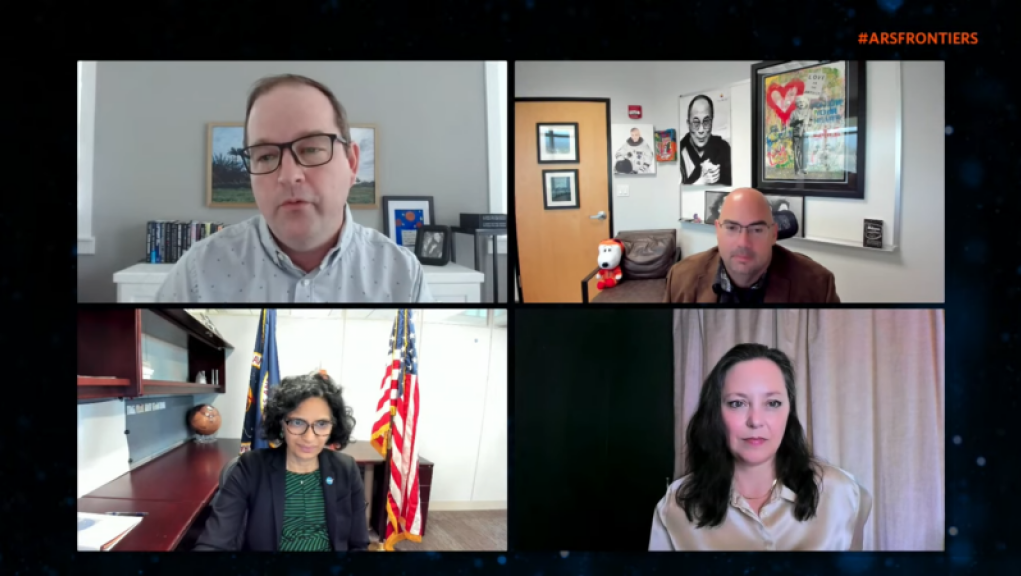The space industry has been booming with the launch of satellites into low-Earth orbit. While SpaceX’s Starlink megaconstellation has played a significant role in this growth, it’s not the only factor. In a recent space panel for Ars Frontiers, experts discussed the implications of this growth in satellites and space-based services. From the cluttering of low-Earth orbit to the development of powerful tools used in conflict, such as synthetic aperture radar and communications in Ukraine, many issues have arisen. You can watch the entire discussion here.
It’s essential to understand how much the environment in low-Earth orbit has changed over the last five years. The majority of satellites are clustered within a few hundred kilometers of the Earth’s surface. Charity Weeden, the vice president of global space policy and government relations for Astroscale, a company working to develop technologies to remove debris from low-Earth orbit, explained that everything has changed in orbit. The number of countries in orbit is probably upward of 100 today, which has helped the entire global community embrace and utilize space for the benefit of all society. Space is threaded into our everyday life in our education products, transportation, communication, safety, security, and economy.
That means we’re all in this together, and accordingly, we need to work together. Over the last six decades, we’ve been using space as our own personal operating dumping ground. The pace of things in the last five to 10 years has shown us that the rules we set up about three decades ago don’t apply and are not fit for purpose today. Only four years ago, there were about 2,500 satellites in low-Earth orbit, and there are about 7,000 today. That number will continue to grow as other megaconstellations, including Amazon’s Project Kuiper and similar constellations built by China and Europe, come online later this decade.
There are significant management challenges, for sure, but NASA’s Bhavya Lal, the agency’s associate administrator for technology, policy, and strategy, struck a hopeful tone. She believes this is a manageable problem, and we just need to take it seriously. One of the biggest issues facing policymakers concerns sharing tracking data for satellites and debris objects in space. Privateer Space is trying to help with this issue by creating a data infrastructure to monitor and clean up space debris. As nation-states, we must share our tracking data and create standards that are the best for humanity so that we can safely operate in space around the known debris. We also need to start to get a better grasp on the known unknowns, which are the debris smaller than that 10 centimeters on a regular basis, and, ultimately, have persistent tracking and have rules and standards around what’s required to put an object in space and how we responsibly manage those objects once they are on orbit.
The 52nd annual Ars Frontiers conference held in San Diego, California, covered a range of topics from the human-space exploration to the sustainability of our space environment, and one issue that was widely discussed was the ever-growing issue of the sustainability of our space environment with over 7,000 satellites and counting.
Experts in attendance discussed the current state of our space environment, the danger it poses and the measures needed to ensure its safety and sustainability. Many of the experts in attendance agreed that while the satellite population has increased significantly in recent years, the technology cannot be a long-term solution to aiding communications across the globe and creating a more efficient and sustainable space ecosystem.
The experts agreed that measures should be taken to cut down the number of satellites in orbit, such as reductions in the number of satellites per launch, increased focus on debris removal, and slowing the rate of launch. In addition to these measures, experts also suggested that satellite technology needs to become more efficient and sustainable by transitioning to a smaller, cheaper, and more efficient satellite technology such as CubeSats.
In addition to these measures, experts discussed the needs for new policies to be created and implemented in order to better regulate and control the number of satellites launched into orbit, such as regulations to limit the number of launch windows and increase transparency on satellite launches.
Overall, the Ars Frontiers conference concluded that while the satellite population has increased significantly in recent years, the technology cannot be a long-term solution to aiding communications across the globe and creating a more efficient and sustainable space environment. The experts at the conference discussed the measures and new policies that are needed to ensure the safety and sustainability of our space environment, and it is essential that these measures and policies are taken into account to ensure the sustainability of the Earth’s atmosphere and outer space.




















